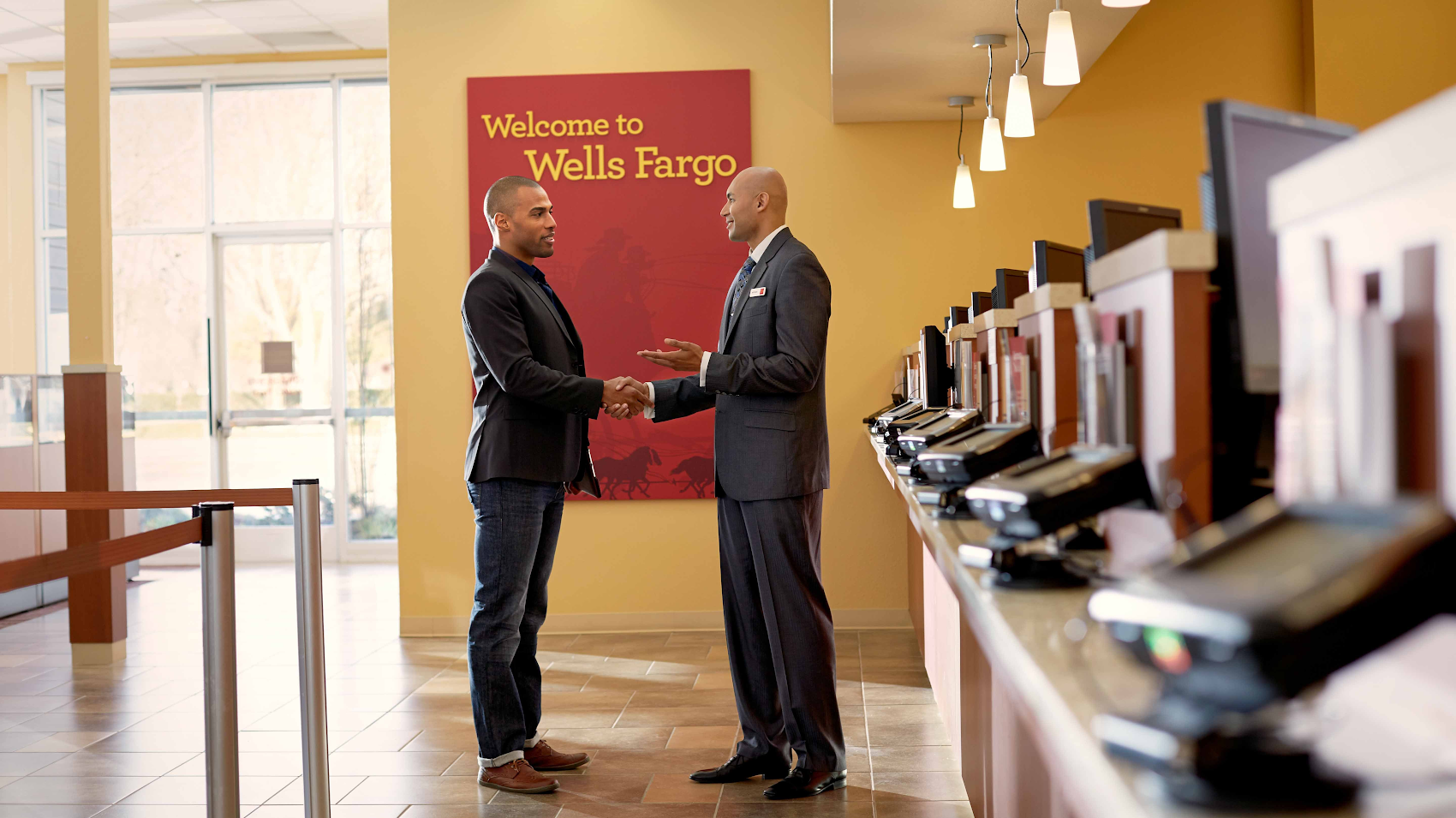In the Clouds with... Wells Fargo's Mike Brady: "I want to empower everyone in my organization to get cloud certified, no matter their role."

Matt A.V. Chaban
Senior Editor, Transform
Welcome to our column “In the Clouds with…” We'll be hearing from IT leaders about what keeps them up at night and their secrets to success.


Mike Brady is the head of technology infrastructure at Wells Fargo, where he oversees a diverse team of more than 8,200 information technology professionals. They are responsible for the global digital and technical services that help keep Wells Fargo at the forefront of diversified financial services companies in the United States.
Prior to joining the San Francisco-based company in 2021, Brady served in several CIO, CTO, and CISO roles at major enterprises, holding senior positions at USAA, Kaiser Permanente, Fidelity Investments, Merrill Lynch, and Citigroup. Brady holds a patent in network security and has been named a Top-100 Irish American Business Leader. In his free time, he has served in executive leadership for the American Heart Association, introducing many companies to their Heart Walks, and holds a 50-ton captain’s license from the U.S. Coast Guard.
Big Six
1. What business challenge is keeping you up at night?
For me, the challenge is simple: It's making sure we don't miss a beat as we support our customers, all the communities we serve, and our employees. At the same time, we must replace our entire legacy technology platform — there isn't a single piece that's going to remain the same. So, while we're busy evolving the company, we still must be there for every ATM transaction, every deposit, every account opening, and so on.
For example, we're busy upgrading Wi-Fi in all our branches right now. As more and more people are coming back in person, we’re able to meet them with a tablet as they walk in and say, “How can we help you?” So, better service, with better technology, without interruption.
2. How deeply is the company invested in the cloud? What about in five years?
We've made a significant commitment that we’re still relatively early in — and that commitment’s foundational. It’s core to the entire transformation partnership we have with Google and Microsoft. We must get out of these elongated release-and-deployment cycles and innovate much, much faster. The infrastructure needs to be more self-healing and much more resilient, and we’ve proven through COVID-19 that we can be a digital-first bank.
To propel that, we’re moving to a platform-based model. This allows us to develop and offer banking services from our core and have the digital-first, API-enabled banking-as-a-service features available across the organization. We call it “hollowing out the core,” taking all the big, monolithic capabilities and putting in very small, fast, lightweight, easy-to-adjust and easy-to-adapt services as our deployment engines.
We’re also becoming more agile. This isn't just about cloud technology — to me, cloud’s a strategic pillar. This is about all of Wells Fargo changing, with more and more parts of the organization adopting agile methodologies, not just within technology but across the business. We want to accelerate our ability to respond to our clients and customers.
3. Tech has always faced talent challenges, from scarcity to diversity. What’s your advice for recruiting top talent in today’s climate?
Enhancing diversity is a big business enabler; it opens the tremendous breadth of talent in the marketplace. This means we must make sure our culture is meaningfully inclusive, and that people understand and appreciate everything diversity brings, like a broader suite of perspectives. We must ensure we’re providing a psychologically safe environment for that to happen. Also, our differences make — and will continue to make — us better as an organization, better for the customers and communities we serve. This message of inclusivity must reach every level of the company, from senior leaders and executives to interns.
We have a terrific neurodiversity program, for example. Although we often think about physical disabilities, cognitive disabilities tend to be invisible and by some studies, even more prevalent than some physical disabilities. In the neurodivergent community, the unemployment rate is as high as 40 percent. So we launched a hiring program during Autism Awareness Month in 2020, which led to an additional 190 full-time hires, all competitively compensated at all technology levels. We have a 99% retention rate over the life of the program. Globally, we want to continue expanding.
We’re also investing in our existing employees. I want everyone in my organization to get cloud certified, no matter their role. When they ask why, I explain that cloud is not just the way Google works; we’re also going to operate that way. We are going to build our new internal environments using many of the same practices and principles. We want everyone to come along because this is the next wave of technology.


4. What has been the most transformational IT initiative you've led to date and what made it a big deal?
This one may seem small, but it’s been a giant leap for us. Being a global systemically important financial institution, we’ve needed to rebuild the connections with our communities and ensure we go through all the steps to satisfy our many regulators. As a result, we’ve kind of been in suspended animation over the past five years, while the pace of tech change has continued to accelerate.
The big shift came when we announced our cloud partnership with Google and Microsoft, and the commitment we made together with the regulators and our business partners, in educating them, putting in the right controls, and building everyone’s confidence that public cloud really can handle mission-critical workloads. Last year, we developed our go/no-go plan and put our first production workloads live in Google Cloud. That sounds like it shouldn't be a big deal, but it was. It was such an incredible landing, and we now get the right to move forward at scale and at pace. This year will be all about velocity.
5. Every executive has their “top secrets of success” they know they’ll repeat when taking any new job. What’s yours?
Job to job, I'm very large-scale, very planful, very organized. I joined Wells Fargo with a copy of Michael Watkins’ “The First 90 Days” in hand. He was a Harvard professor who looked at people who joined companies and then crashed and burned after 18 months. Watkins noticed that within the first 90 days, they'd all failed to do certain things or made certain mistakes.
So he put together a plan: The first 30 days, you're building relationships, assessing the organization, not jumping to conclusions. The second 30 days, you're diagnosing what the organization needs, meeting with key stakeholders to discuss priorities. The third 30-day period, you go ahead and implement those priorities. For me, it's a very good way to truly put assumptions aside, build relationships, diagnose the situation, and prioritize.
Also, I always try to honor the past and never, ever, ever second-guess a decision that was made before me, which I learned from William Bridges’ “Managing Transitions: Making the Most of Change.” You can never really know what those past constraints were — the information they had or didn’t have, or what the situation was like then.
6. What is the best advice you've ever received?
It was from a former dean at Wake Forest University, an incredible leadership consultant named Dr. Merwin Hayes. He's written books about leading with humility, and I was fortunate to have had him as a coach. His advice, borrowed from St. Jerome, that I still give to this day and goes to the core of my being, is: “Good, better, best. Never let it rest. Until your good is better and your better is best.”
When public cloud really can handle mission-critical workloads... That sounds like it shouldn't be a big deal, but it was. It was such an incredible landing, and we now get the right to move forward at scale and at pace.
Dirty Half-Dozen:
1. Book on your nightstand? “Dead in the Water,” about a tanker attacked by pirates, but it was actually an insurance scheme.
2. Lunch with a leader, living or dead? Thomas Edison, who innovated even in an industrial age.
3. Favorite way to R&R? I'm very much a beach and water person, especially in the early morning, in the peaceful waters of California.
4. RTO, WFH, or Mission to Mars? A blend of the first two, which is not as hard as a mission to Mars, but not easy, either. We’re still figuring it out.
5. Three apps you can't live without? Google News, Amazon Music, and home automation, which unfortunately is still fragmented between a lot of different apps.
6. Your motto or mantra? “There is no try, there is just do.” It’s a nod to "Star Wars: Episode V – The Empire Strikes Back" when Yoda is training Luke Skywalker. One year, my team even bought me a Santa hat with Yoda ears.



